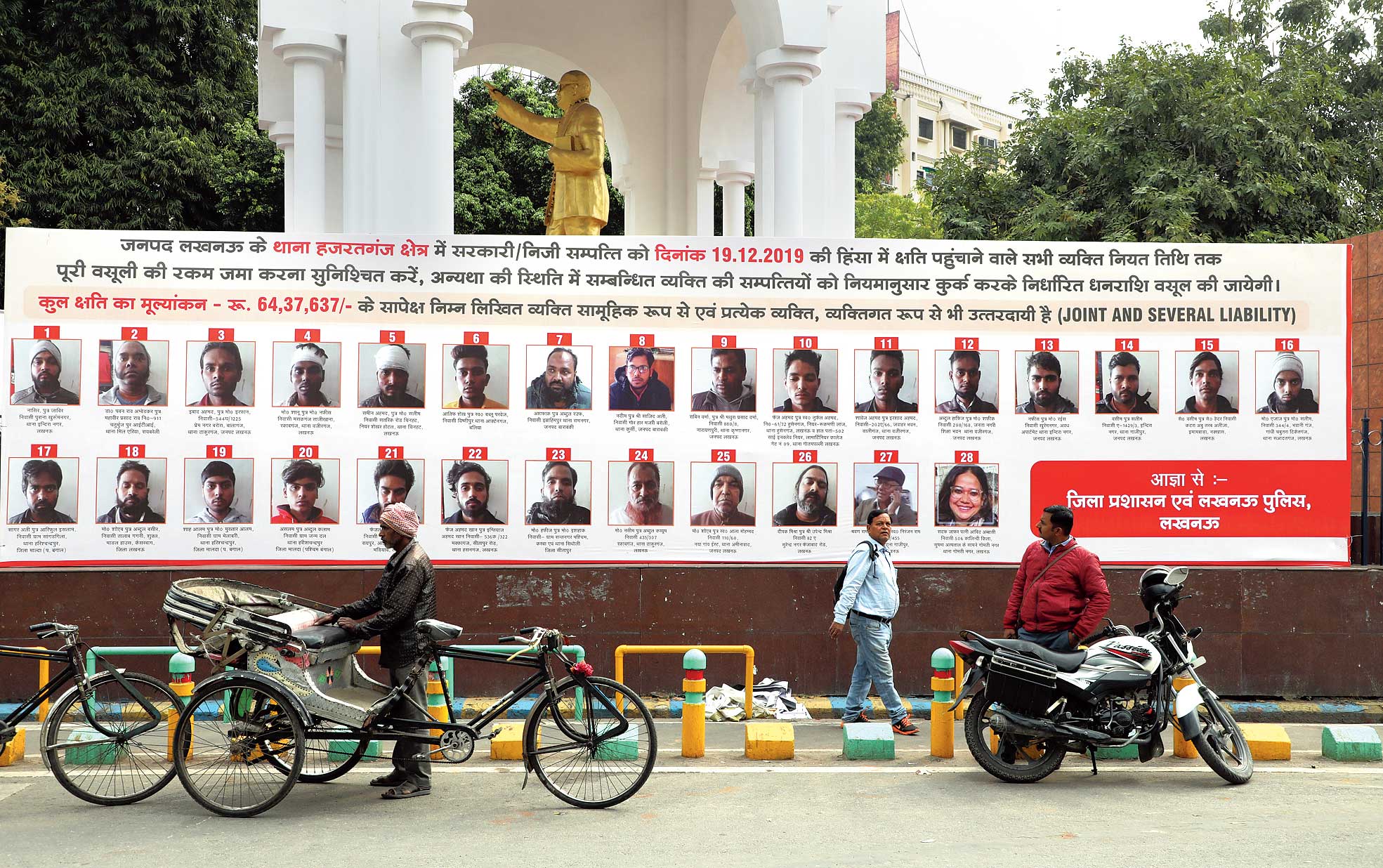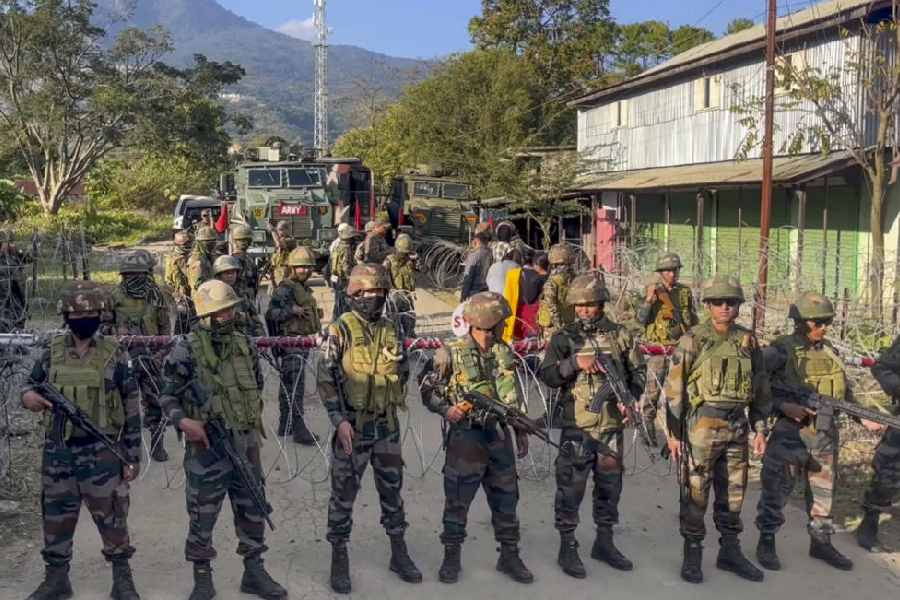The Supreme Court on Thursday told the Uttar Pradesh government that there was “no law” that backed its action of putting up pictures, along with personal details, on roadsides of those accused of vandalism during anti-CAA protests in Lucknow.
The top court referred the matter to a larger three-judge bench on the ground that it required “further elaboration and consideration” on whether the fundamental right to privacy of the alleged protesters could be waived by the state by “castigating them for all times” to come.
Many of those whose pictures have been put up at crossroads in Lucknow have viewed the move as an open invitation to murder those protesting against the government.
“As of now there is no law which backs your (state) action. The action of the state has to be backed by some law,” a vacation bench of Justices U.U. Lalit and Aniruddha Bose of the Supreme Court said, refusing to stay a March 9 Allahabad High Court order that had ordered the state government to take down the posters.
“We direct that let the papers be placed before Chief Justice of India S.A. Bobde so that a bench of sufficient strength considers the matter in the coming week,” the two-judge bench added.
The matter is likely to be taken up next week. Solicitor-general Tushar Mehta, appearing for Uttar Pradesh, did not press for a stay order.
The Yogi Adityanath government had appealed in the Supreme Court against the Allahabad High Court order. The BJP dispensation has ordered the 57 accused persons to pay fines for the damage allegedly caused to public and private property during the protests against the Citizenship Amendment Act or be prepared for their properties to be attached.
The top court, however, said it understood the “anxiety” of the state government and there was “no doubt” that rioters should be punished and told to compensate for the damage caused.
It said that though there was no doubt that there should not be any kind of vandalism and that the accused should be booked, the question was “can the state go two stages beyond that” and decide to name and shame the protesters.
Mehta told the court that once a person decides to put himself in the public domain, like by wielding a gun, he can no longer say that he has the right to privacy and the media should be restrained from publicising him.
“If your unruly behaviour is video-graphed, then you have put yourself in public glare. But here, we are on a slightly different footing and the issue is can the state waive the privacy rights of persons to castigate them for all times?” the bench observed.
It said there was a difference between the rights of an individual and those of the state, which must be backed by law.
“Individuals can do anything but the state has to act in accordance with the law. Here, in this case, where is that power?” the Supreme Court asked when the law officer said it had to take into account national interest and the damage caused to public property.
Justifying the state action, Mehta said it was a matter of “great importance” and there was apprehension that the alleged rioters might dispose of their properties despite there being recovery notices against them.
Mehta told the court that the posters had been put up as a “deterrent” and the hoardings only said that the accused persons were liable to pay for their alleged acts during the violence.
Mehta, who was assisted by Uttar Pradesh advocate-general Raghuvendra Singh, assailed Allahabad High Court’s decision to take suo motu cognisance of the issue and said it was done despite the fact that several petitions of alleged rioters were pending before the Lucknow bench of the same court.
He said that initially 94 people had been identified and summoned by the competent authority. After hearing them, recovery notices were issued against 57 alleged rioters belonging to various communities, Mehta said.
Senior advocate A.M. Singhvi, appearing for former IPS officer S.R. Darapuri who is among those who feature in the posters, told the Supreme Court that the state was duty-bound to show the authority of law backing its action.
He said the action of the Uttar Pradesh government amounted to a “mega blanket” approach of naming and shaming people without final adjudication and it was an open invitation to common people to lynch them as the posters also bore the addresses and photographs of the accused.
“I am giving the extreme example of a child rapist and a murderer. When did we hear the example of naming and shaming an accused? If such an accused walks on the streets after getting bail, then he is likely to be lynched if he has been named and shamed,” Singhvi said. “We don’t have an anarchy in the state that the government will start doing this.”
Senior advocate Colin Gonsalves, appearing for another alleged protester, said his client was a lawyer and had faced assault in the past for taking up the cause of minorities, and he might be attacked again now that the posters had been put up.
Another senior advocate, C.U. Singh, said the state government was following a “vindictive approach” and the sharing of details of a person would make him vulnerable. He said the source of the power to put up posters of protesters should emanate from a law, not from guidelines or executive orders.
While ordering the removal of the posters, Allahabad High Court had directed the district magistrate and the Lucknow police commissioner to submit a compliance report on or before March 16.
Besides IPS officer Darapuri, activist-politician Sadaf Jafar is among those whose names and photos have been put up.











